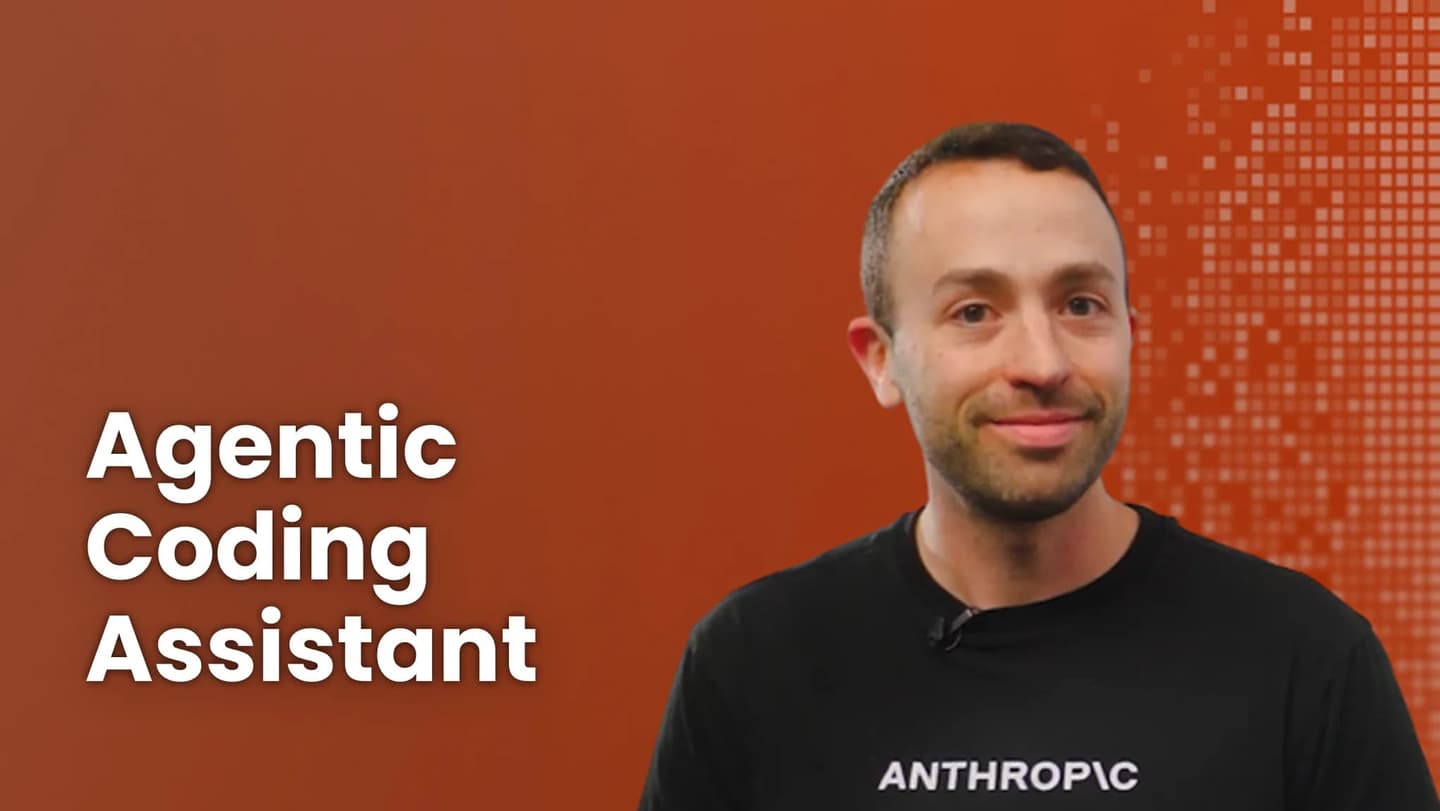Use Claude code to explore, develop, test, refactor, and debug codebases.
Welcome back!
We'd like to know you better so we can create more relevant courses. What do you do for work?

You have successfully joined undefined
You now have access to all Pro features. Click below to start learning!Claude Code: A Highly Agentic Coding Assistant
Instructor: Elie Schoppik

- Intermediate
- 1 hour 50 mins
- 10 Video Lessons
- Instructor: Elie Schoppik
What you'll learn
Extend the capabilities of Claude Code with MCP servers such as Playwright and Figma MCP servers.
Apply Claude Code best practices to three projects: exploring and developing the codebase of a RAG chatbot, refactoring a Jupyter notebook for e-commerce data and transforming it into a dashboard, and building a web app from a Figma mockup.
About this course
Learn the best practices for agentic coding with Claude Code in this new short course, Claude Code: A Highly Agentic Coding Assistant, built in partnership with Anthropic, and taught by Elie Schoppik, Head of Technical Education.
AI coding assistants have evolved rapidly, from tools that help with occasional coding questions and code completion to tools that can autonomously generate code. Claude Code pushed the degree of autonomy by acting as a highly agentic assistant that can plan, execute, and improve code with minimal human input, for more than a few minutes. You and your teammates can now run multiple instances of Claude code and work in parallel on different parts of the codebase. However, coordinating all this involves a set of best practices that can significantly boost your productivity.
In this course, you’ll learn best practices for using Claude Code to improve your coding workflow. You’ll learn key tips on how to provide Claude Code with clear context, such as specifying the relevant files, clearly defining the features and functionality, and connecting Claude Code to MCP servers.
You’ll apply these best practices to three examples: exploring a RAG chatbot codebase, analyzing ecommerce data in a Jupyter notebook, and creating a web app based on a Figma mockup.
In detail, using Claude Code, you’ll:
- Understand the underlying architecture of Claude Code, the tools it uses to navigate your codebase, and how it stores memory across sessions.
- Explore and understand the codebase of a RAG chatbot and how information flows between the frontend and the backend.
- Initiate a CLAUDE.md file inside your project directory containing information and guidelines about your codebase that Claude Code can remember across sessions.
- Get context into Claude Code by mentioning the relevant files and providing screenshots or images, and control the context using escape, clear, and compact commands.
- Add features to the frontend and backend of the RAG chatbot: ask Claude Code to plan first to improve its performance, use thinking mode for harder tasks, and brainstorm ideas using Claude Code’s subagents.
- Write tests to evaluate the RAG chatbot functionalities, and refactor parts of the chatbot.
- Use git worktrees to run multiple Claude sessions simultaneously, each focused on adding an independent feature to the chatbot.
- Fix Github issues, and create, review and merge Github pull requests using Claude Code’s Github integration.
- Execute code before and after using tools through Claude Code hooks.
- Refactor a Jupyter notebook for e-commerce data analysis and transform it into a dashboard.
- Connect Claude to the Figma MCP server to import a design mockup to Claude Code, and develop a web interface showing economic data from the Federal Reserve Economic Data.
- Use Playwright MCP server to automatically open a web browser, take screenshots, and guide Claude Code to improve the UI design of an application.
By the end of this course, you’ll have a set of best practices you can apply to speed up and improve your coding workflow.
Who should join?
This course is ideal for anyone who wants to explore how AI coding assistant tools like Claude Code can enhance their development process. Whether you’re building applications, debugging code, or exploring unfamiliar codebases, you’ll gain practical skills to work more efficiently with AI-assisted workflows. You can make the best of the course if you’re familiar with Python and Git.
Course Outline
10 Lessons・0 Code ExamplesIntroduction
Video・4 minsWhat is Claude Code?
Video・8 minsCourse Notes
Reading・1 minSetup & Codebase Understanding
Video・14 minsAdding Features
Video・17 minsTesting, Error Debugging and Code Refactoring
Video・12 minsAdding Multiple Features Simultaneously
Video・11 minsExploring Github Integration & Hooks
Video・10 minsRefactoring a Jupyter Notebook & Creating a Dashboard
Video・12 minsCreating Web App based on a Figma Mockup
Video・9 minsConclusion
Video・1 minQuiz
Graded・Quiz
・7 minsPrompts & Summaries of Lessons
Reading・10 mins
Instructor
Course access is free for a limited time during the DeepLearning.AI learning platform beta!
Want to learn more about Generative AI?
Keep learning with updates on curated AI news, courses, and events, as well as Andrew’s thoughts from DeepLearning.AI!

